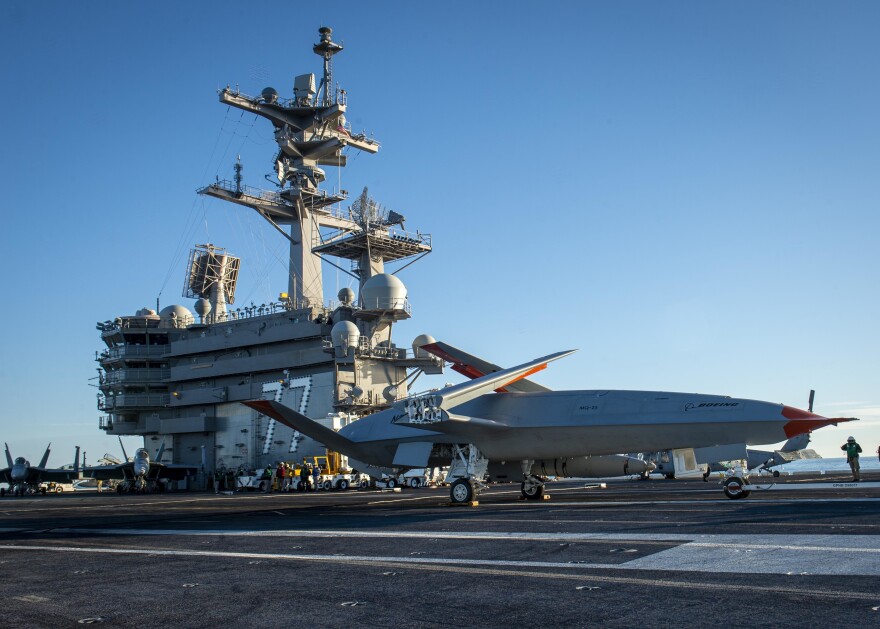Norfolk will be the future East Coast home for a new class of Navy drones.
The Navy ruled there was no need for an environmental assessment. The ruling allows the Navy to begin building facilities to house the MQ-25A Stingray at Naval Station Norfolk.
Before a public hearing on the draft environmental plan in May, Naval Station Norfolk Commander Capt. Matthew Schlarmann said the drones will eventually be used to refuel carrier-based planes.
“It's the Navy looking into the future and understanding that the future fight is going to be a mix of unmanned and manned systems,” he said.
At the moment, the Navy does not have a dedicated carrier-based refueling plane. F/A 18 fighters can be set up to refuel other planes in the air, but the process puts a strain on the limited number of fighters. Mid-air refueling dramatically improves the potential range of Navy aircraft, which can be particularly vital as the Navy looks at near-peer competitors like China.
Boeing is scheduled to begin full production on the MQ-25A next year. Naval Base Ventura County in California is expected to house the first drones. The project has faced delays. The first of the unmanned aircraft were originally expected to be delivered to the Navy last year.
The drones will be deployed along with aircraft carriers, but while in Norfolk the unmanned planes will fly similar routes used by manned Navy aircraft.
Construction on the new base in Norfolk is scheduled to begin next year and run through 2029. The first drones are scheduled to arrive on the East Coast in 2031. Norfolk is expected to have 20 drones based out of Norfolk by 2035, Schlarmann said in May.
The Navy is standing up a new squadron to operate and maintain the MQ-25A. The new squadron will add another 600 to 700 sailors to Hampton Roads.
The Navy received two comments from the public hearing held in May. Planners ruled the proposed action would not significantly impact the quality of the human environment. The Navy has issued a finding of no significant impact and will not prepare an Environmental Impact Statement, which clears the way for construction to start in 2026.


